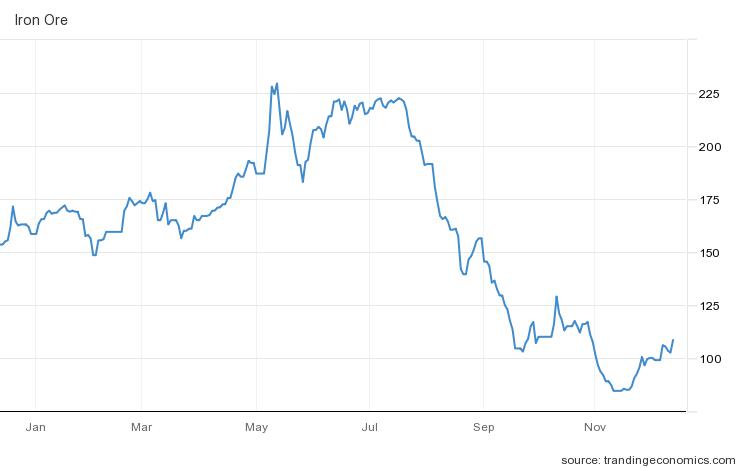The iron ore complex saw spot prices pullback while coking coal and rebar futures lifted on supply concerns yesterday.


Interesting read from Stockhead regarding the push away from coking coal for the steel industry, as the decarbonising movement rolls on, lowering emissions will mean a big shift to super high grade iron ore – problem is there’s not much of it, especially here in Australia:
Steel has no true substitute, meaning finding solutions to decarbonise the sector will be essential to limiting global warming to 1.5C or lower this century.
While that’s partly a technological challenge, and one many of the world’s iron ore miners have taken on, there is a potentially bigger issue at hand.
As iron ore expert and Magnetite Mines’ (ASX:MGT) Technical Director Mark Eames points out in a white paper released last week, high-grade iron ore is needed to transition to low-emissions steelmaking. And lots of it.
The biggest issue, as Eames eloquently points out in his paper, ‘Where will future iron ore supply come from?’, is that there isn’t much around.
“There is a growing consensus that low-emissions steel will require large volumes of high-grade iron ore,” Eames says. “So, the question is, where will all this high-grade iron ore come from? And is it available? The challenge is that over the last 20 years or so, traded iron ore grades have gone down, not up.”
The Pilbara region in WA is a geological marvel, already yielding over half a century of its bounty and it’s still the source of around half the world’s iron ore supply.
But with iron ore delivering $150 billion in Aussie exports last year, it has also emerged as one of the country’s biggest vulnerabilities.
Although the transition to zero emissions steel is feasible – BloombergNEF says it’ll need some US$278 billion of investment by 2050 – iron ore producing countries face challenges that go beyond funding, especially Australia.
“Australia, however, currently produces lower-grade ores, and could lose its number one place in the supply chain, if it does not invest in equipment to upgrade its product,” BloombergNEF commented.
Attempts to identify large, high-grade iron ore deposits in the Pilbara have largely been fruitless.
“Iron ore grades from Australia now average around 60%, well below the industry 62% benchmark,” Eames said.
“This combination of mineralogy, history and results suggests that it is unlikely that the conventional Pilbara orebodies (Brockman, Marra Mamba and channel iron deposits) can be economically upgraded to high-grade iron products in significant volumes.”
“So the global steel industry faces a massive challenge – well over half of current global iron ore comes from the Pilbara, so if the traditional Pilbara operations are not able to supply the large volumes of higher-grade ores required, how will steel industry emissions be reduced?”